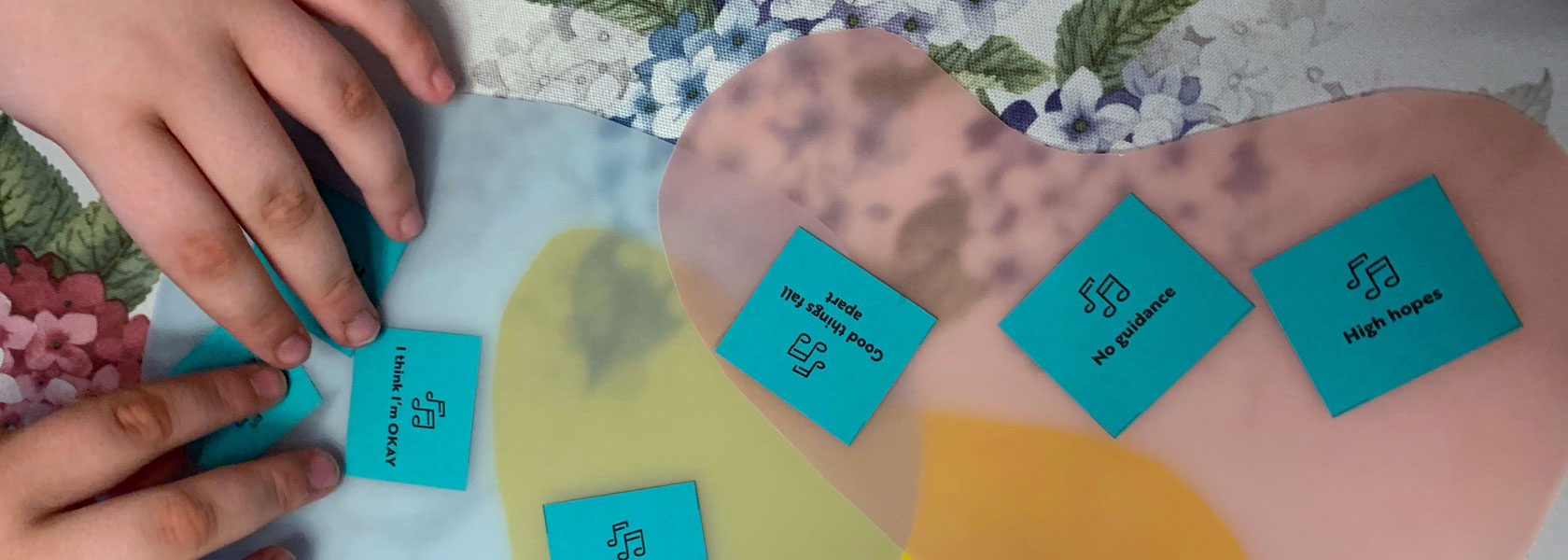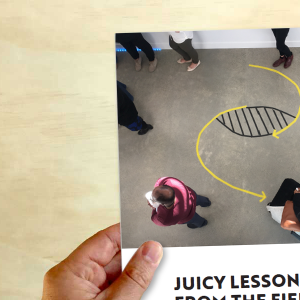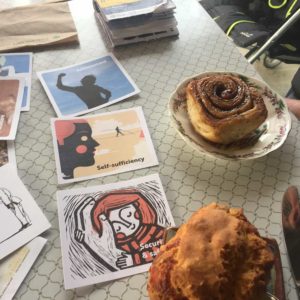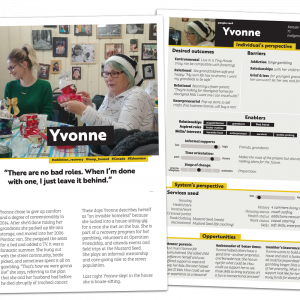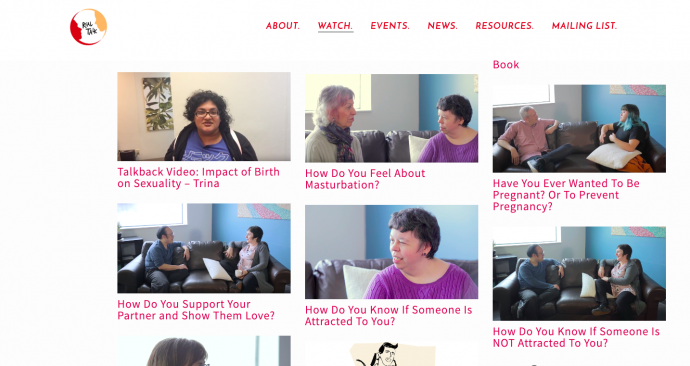We call our approach Grounded Change.
That means flipping the order in which most social policies & services are made. Rather than start at the top, in boardrooms, we start at the bottom, in living rooms.
We work with people experiencing the realities of poverty and social isolation to reframe outcomes and co-develop interventions. Everything from new volunteer platforms to family networks to frontline tools. Only once we’ve found practice that works for people and practitioners do we embed new kinds of HR routines, data systems, and funding protocols.
We flip orders ...
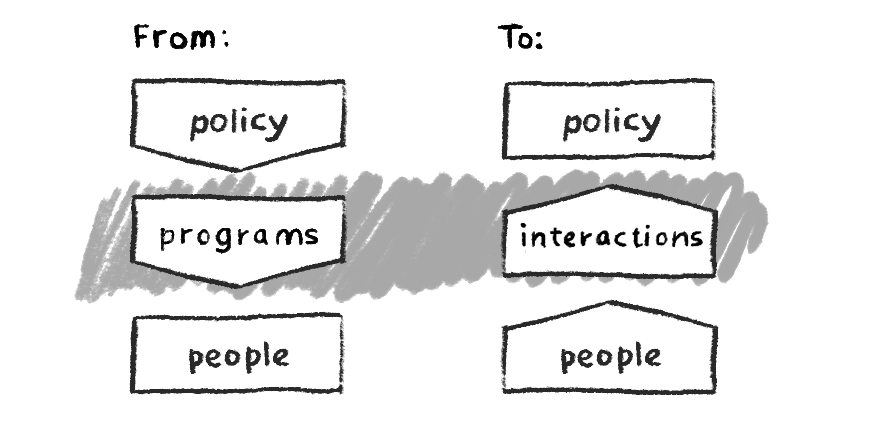


We draw on multiple ways of knowing and acting:
Our approach brings together diverse ways of understanding and intervening in the social world. We see ourselves as polyamorous – with multiple disciplinary partners — as we work through cycles of divergence (going wide to learn and question) and convergence (going deep and honing in on details).

- Anthropology, sociology, and psychology ground us in human behavior and relationships. We seek to understand what people think, feel, say, and do in the places that they live and work. How? By doing ethnographic fieldwork, synthesizing small data, drawing on behaviour change research, and testing theories of change.
- Service design lets us imagine what could be, and create interactions that close gaps between what people do and want. We make ideas tangible to find out if they are desirable, feasible, and viable. How? Via storyboards, mock-ups, journey maps, wireframes, experience prototyping, and beta testing.
- Community outreach teaches us how to mobilize networks and engage the unusual suspects, while business thinking helps us to diversify resources and create business models that tap into people’s time, talents, and treasures.
- Implementation science looks beyond models to what actually propels adoption of new practices in real life contexts.
- Transformative leadership builds the courage to be vulnerable, challenge assumptions, un-learn, and re-learn.
There are 7 features of our approach:
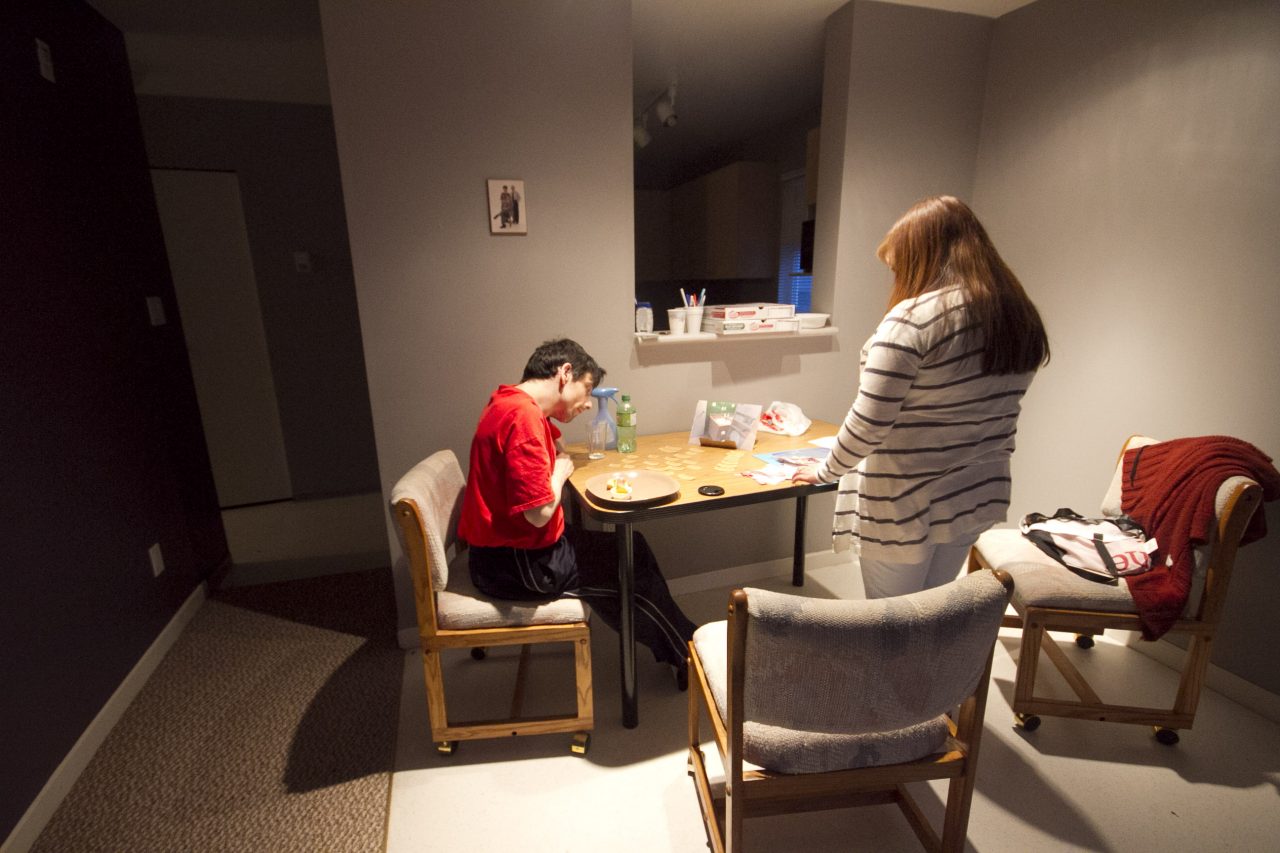
Start with people in context
We believe change must start by understanding the lived realities of people who are isolated, left out, and experiencing the effects of poverty. Their voices must drive systems and policies.

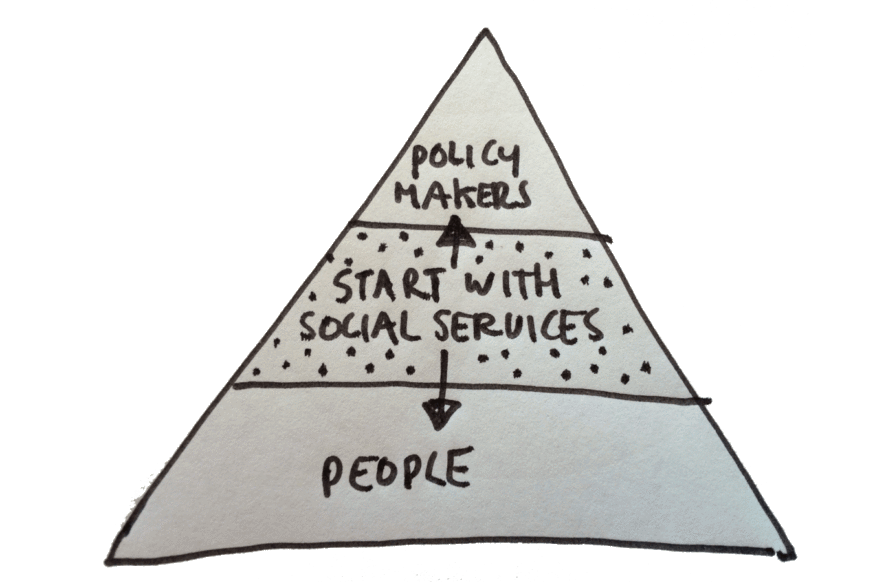
Work middle-up and down.
We bring together social services to use their leverage up and down. Social services sit between policymakers and people. To get closer to systems change, we must reset roles, relationships, & resources.

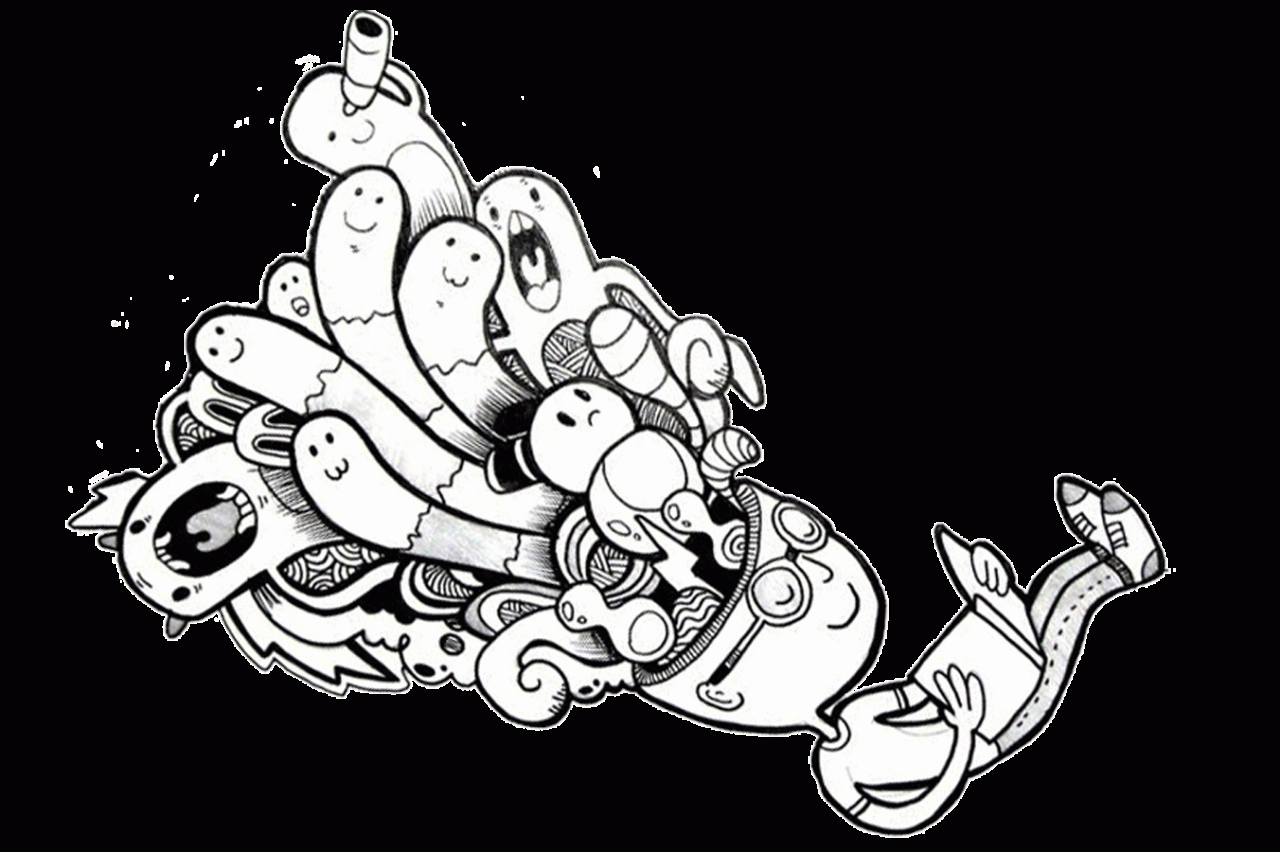
Blend observations + theory.
We mix ground-up insights (small data) with academic theory and practical research. Great ideas come from design, humanities, scientific, and indigenous ways of seeing the world.

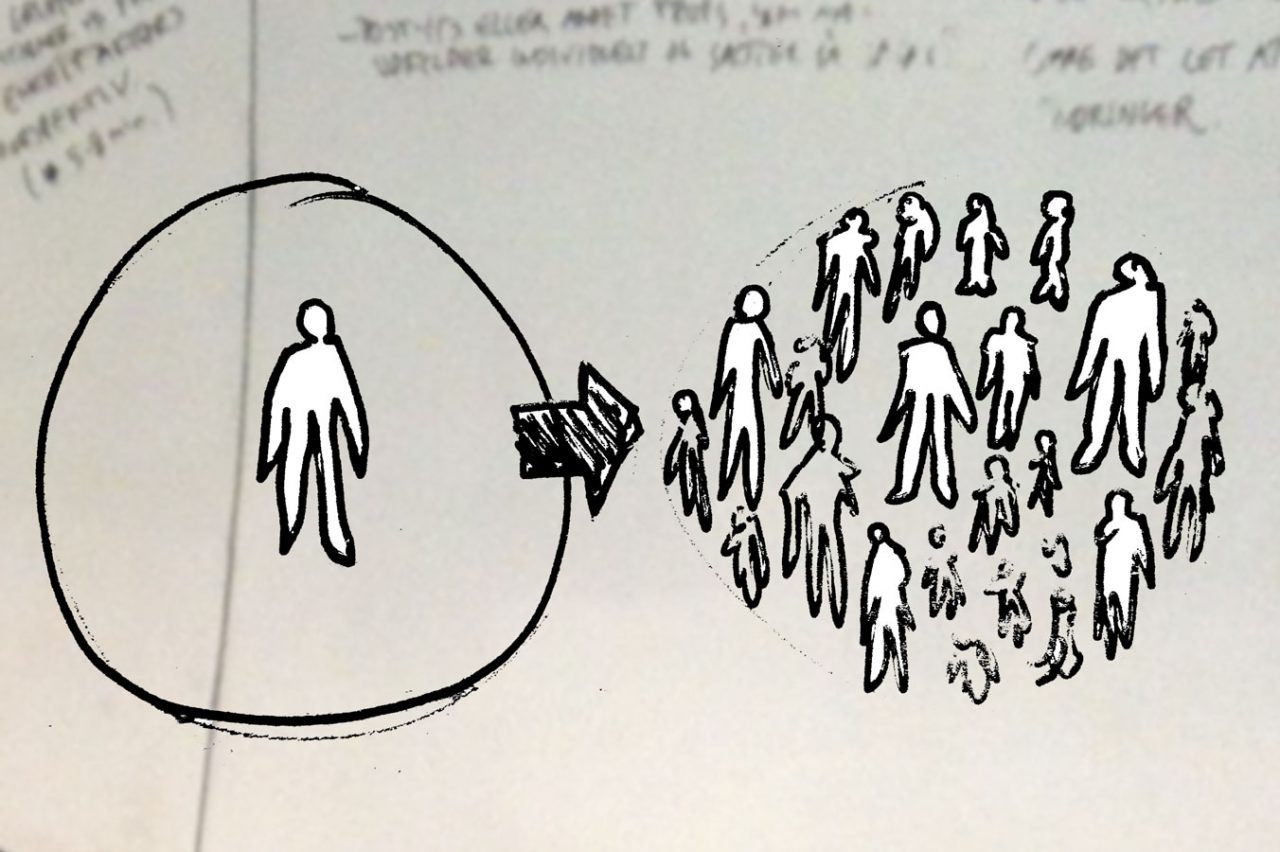
Design with values.
What we make isn’t just driven by what people say they want – but by our values. The user isn’t always right. We use our humanistic values to guide how we re-frame problems and outcomes.

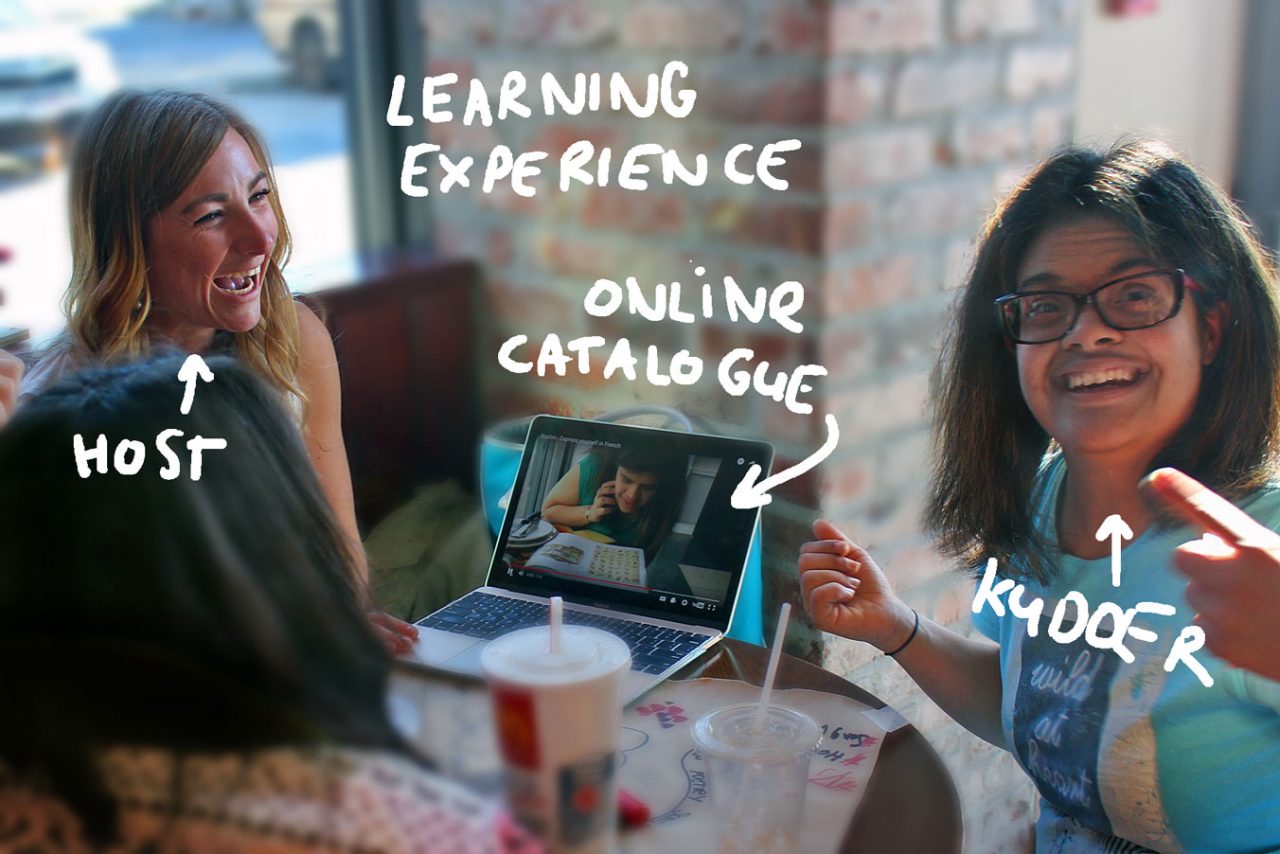
Make interactions real.
Great ideas only matter if they are implemented. We don’t just produce recommendations or blueprints. We create live interactions, user experiences, and back-end systems to test what works for whom.

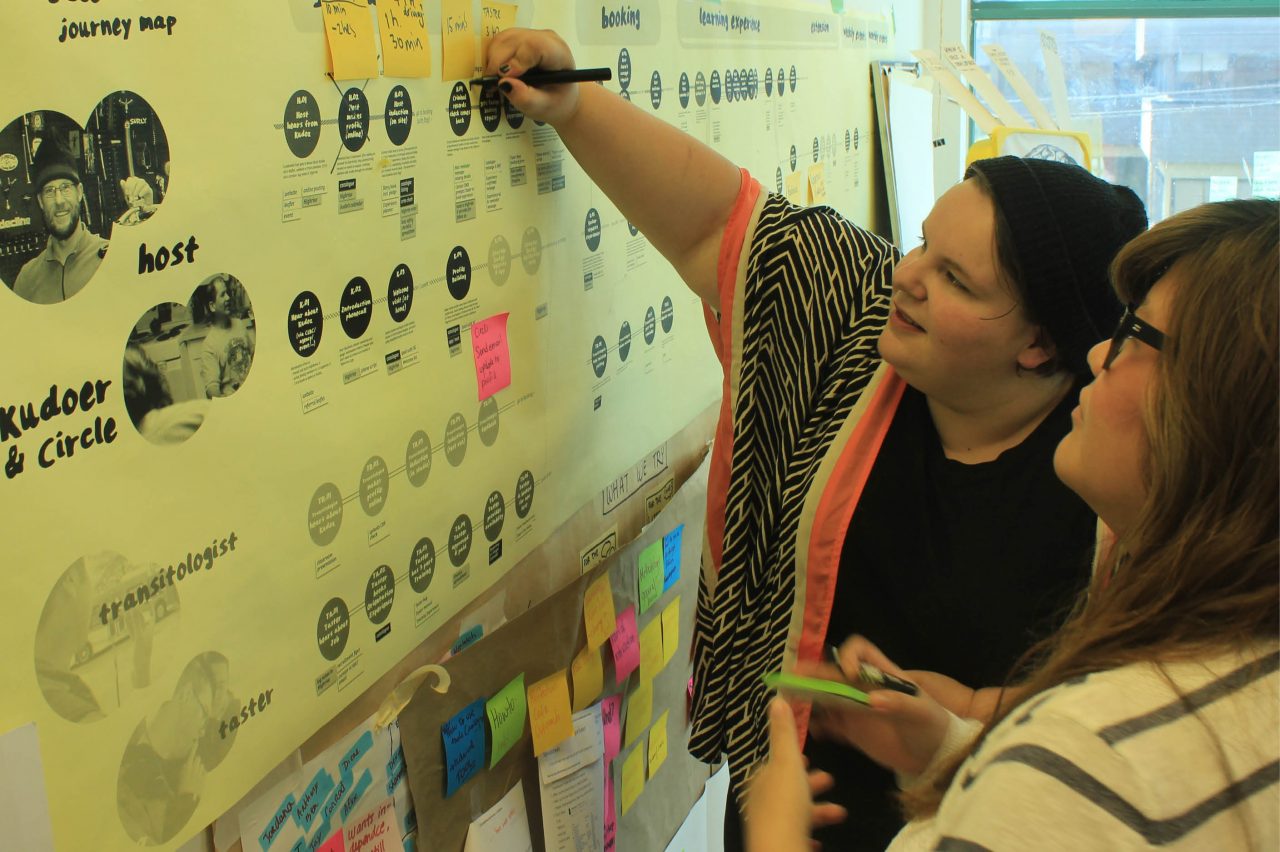
Measure what matters.
Success is behaviour & cultural change. We create theories of change and design metrics that track determinants: that is, the factors that affect outcomes. We feed data back to people as a learning tool. Evaluation keeps us humble.

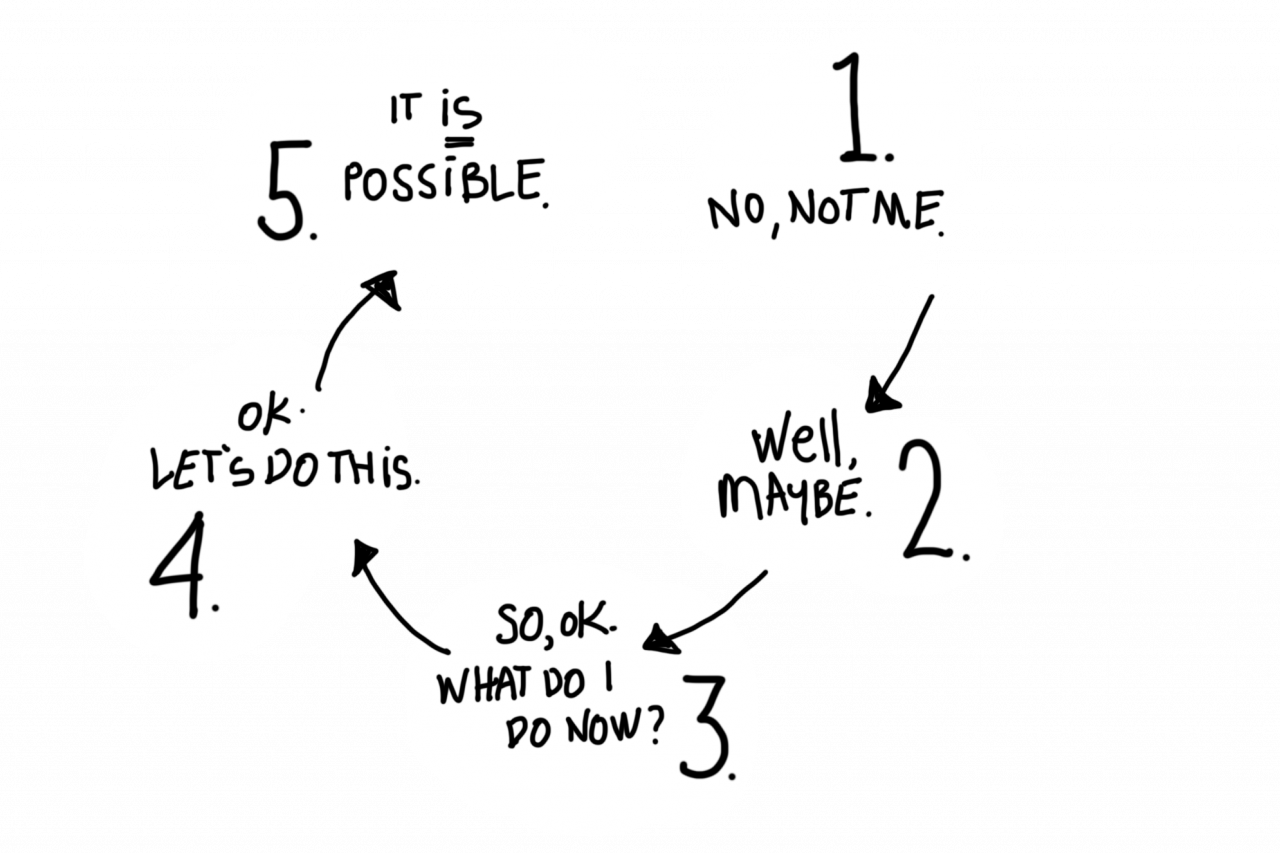
Scale deep.
Sustaining behaviour change requires shifting values and routines. Getting to that level is darn hard. It requires holding space for the grief and loss of old ways of doing things.

Our approach results in impactful interventions
Behind everything we make is a change mechanism: an interaction that prompts change in what people do, say, think, and feel. We’ve named 7 kinds that (we think) are the most important to weave into policy, procurement, service delivery, and community activities.
After 10+ years working in 6 different countries with families in crisis, isolated older adults and troubled teenagers, we kept surfacing a need for similar interventions. Like networks to find and match positive deviants with peers. Like roles which build bridging relationships.
So we went to the literature and combed through tonnes of theories. We found patterns there too. It’s time to stop re-inventing the wheel, and instead re-invent when and how we use the wheel. You see, in engineering there are 6 simple building blocks of more complex machines: the wheel, lever, inclined plane, pulley, wedge, and screw. Similarly, we think there are at least 7 building blocks to interventions that enable change.
These change mechanisms are:
Widen exposure.
People don’t know what they don’t know. Good interventions offer real choices and shape preferences. For example: Kudoz.
Enable reciprocity.
People want to contribute. Good interventions are two-way exchanges, not one-way transactions. For example: Humans Understanding Humans.
Grow stories of capability.
Too often, people have to talk about their needs and deficiencies to get support. Good interventions strengthen narratives of capability and growth.
Model and rehearse.
People learn by watching peers and trying for themselves. Good interventions are peer-to-peer and experiential, not expert-led and informational. For example:Fifth Space and the Learning Circle.
Build social capital.
Opportunities flow through networks. Good interventions intentionally expand and diversify social networks, helping to broker bridging relationships. For example: Kudoz
Show change.
Feedback can be a real motivator for change. Good interventions make user data visible and actionable. For example: Grounded Data and Curious Conversations.
Spark beauty.
Shame and stigma are real barriers to sustainable change. Good interventions are lovely and dignified. For example: Real Talk.
What’s different about our approach?
…from Social Labs?
Social labs are also interdisciplinary change processes. There’s a lot of variation under the social lab banner, but typically, they are one-off commitments of time and resources, often in the form of workshops. With Grounded Space, we tried to build endemic structures for experimentation. Our focus was on setting-up embedded teams, routines, HR pipelines, and data systems. We weren’t 100% successful, but we have managed to build and support ongoing teams.
… from Collective Impact?
Collective impact is also an infrastructure approach to change. Community organizations coordinate their efforts around a common set of outcomes, supported by a backbone infrastructure. Coordination is one lever for change – but it is distinct from participatory design. Three years of research exploring whether inter-agency structures enabled transformative change led to the conclusion that, for the most part, they do not.
There is no inbuilt way to spark divergence, and divergence is an important condition for fresh ideas. We find divergence typically comes from spending time with the people not in the room. That’s why we go to communities, to listen and learn, and create a pipeline of new and old ideas to test.
…from Design Thinking?
Design thinking is just one of many frameworks that informs our approach. We are melding design, anthropology, behaviour change theory, implementation science, organizational psychology, even philosophy in practical ways. This leads us to ask different questions and to develop interventions that have a multifaceted evidence base.
Plus, our focus isn’t just on ideation, but on implementation. We don’t just create conceptual models of new services or systems, we actually convene teams to make & iterate all their component parts: from writing communication materials to developing user facing tools to building websites to coding databases, etc.
Books that shape our thinking
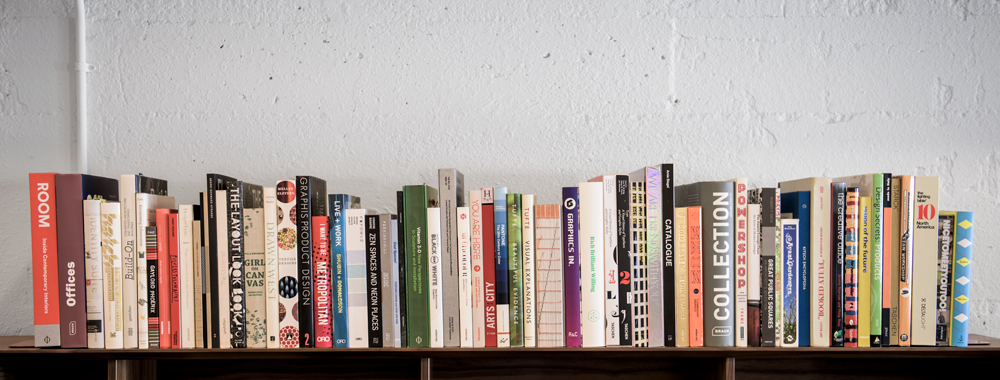
For a list of our favorite books, go to our media library and select the format ‘books’.
